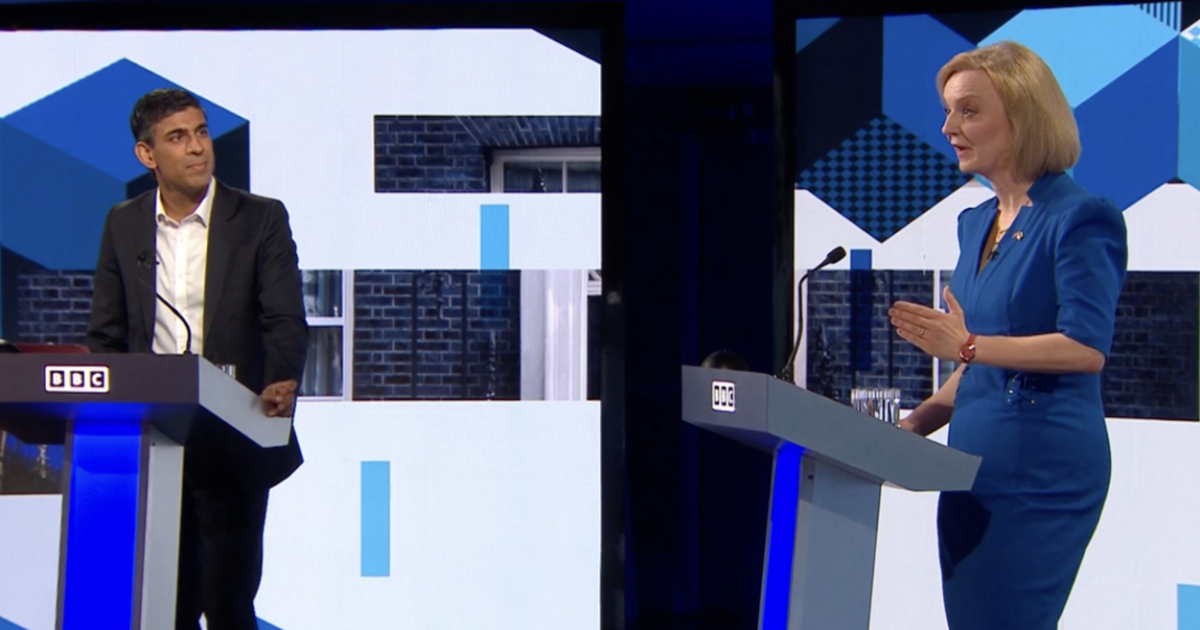Borrowing to preserve ecosystems – rather than fund tax cuts – is the fiscally responsible thing to do.
In Monday night’s Conservative leadership debate, former chancellor Rishi Sunak reiterated his earlier claims, accusing his competitor Liz Truss of fiscal irresponsibility. Unfunded tax cuts would simply be “racking up bills on the country’s credit card that we pass on to our children and grandchildren”, he said.
Sunak further suggested that Truss’s plans risked stoking up inflation and (erroneously) claimed Truss’s own economic adviser had stated her plans for the economy “would mean that interest rates would have to go up to around 7%”.
Liz Truss, meanwhile, has put together a plan to cut £30 billion of taxes funded primarily through borrowing. So, after a decade of macroeconomically illiterate debt and deficit fearmongering, suddenly tax cuts funded by borrowing are apparently affordable, and won’t leave future generations to foot the bill.
A look under the macroeconomic bonnet, however, reveals that too little government borrowing can be a burden on future generations, as can a poorly allocated fiscal stimulus. If investment is strategically directed, there are many reasons why government borrowing could leave future generations better off. Future taxation can also be fair and sensible.
Debt – a burden for future generations?
According to the conventional policy-making approach – advocated by the Treasury, IMF and OECD – higher levels of borrowing and debt will always be a burden to future generations. This stems from the idea that a government must balance its budget, like a household or small-sized business.
Viewed through this lens, to prevent our grandchildren from funding our current standard of living, today’s current expenditure should be offset by current taxes or taxes in the short-run. Otherwise public borrowing becomes a taxation deferred: it makes future generations pay for public expenditures they didn’t benefit from.
There are, however, at least three reasons why macroeconomics is a lot more complex than this.
First, unlike a household, government spending and income are not independent of one another. Investments in productive income-generating activities have what economists call ‘multipliers’, which can boost growth, employment and tax revenue. With future flows of income created, the original debt taken out can be repaid. Borrowing for green investments, for example, have a number of positive economic multipliers and are often said to pay for themselves.
Second, what actually counts is the cost (affordability) of servicing debt, i.e. whether the government can securely pay off debt interest payments. There is virtual agreement across the board that public finances are sustainable indefinitely when debt servicing costs are equal to or below the growth rate of the economy. In fact, public borrowing may not require tax rises for future generations: if interest rates are lower than the increase in national income, the relative debt burden will shrink over time on its own.
Third, on the other side of debt (liabilities) there are often assets (resources owned by the government), which will be left to future generations. While some worry about leaving liabilities to future generations, our grandchildren could also be upset that they do not have enough assets (like a fully functioning NHS, being energy independent, or having healthy ecosystems).
(There is also a fourth point, which this blog has made many times before. Government borrowing doesn’t always need to be funded by taxation; it can be monetarily financed, as government borrowing effectively was during the Covid crisis, and the central bank can help control the level of interest the government pays on its debt. But importantly, there are also constraints, such as inflation, and negative side effects to these measures too).
But borrowing can be burdensome for future generations if it results in a suboptimal or inefficient allocation of resources; for example, borrowing to finance tax cuts, as proposed by Liz Truss. Recent academic evidence has shown that tax cuts for the rich or corporates do not lead to higher levels of investment, but rather increase inequality, with benefits not significantly trickling down into higher growth, wages or employment. If higher levels of inequality result and the productive capacity of the economy is diminished, future generations will not benefit.
Meanwhile, the additional spending power and net wealth of the private sector, under certain conditions, could lead to higher levels of inflation (in the short-run or longer-run). To curb aggregate demand and inflation, interest rates may have to be raised (increasing the costs for future borrowers). Alternatively, additional taxes could be levied (reducing households’ disposable incomes).
Given the increasing likelihood that the UK is heading towards a recession, it seems unlikely that Truss’ proposed tax cuts would require an increase in the bank rate. Separately, it is worth noting that borrowing for investment that increases a country’s supply potential (i.e. much needed green infrastructure) needn’t be inflationary. Indeed, lack of investment can hurt the supply side of our economies – potentially exacerbating inflationary pressures.
In short, borrowing can place a burden on future generations or lead to intergenerational inequalities, but a lack of borrowing for investment can also do this. The key lesson, however, is that it is fiscally responsible to strategically borrow and tax to build a better economy and preserve ecosystems for our grandchildren.


